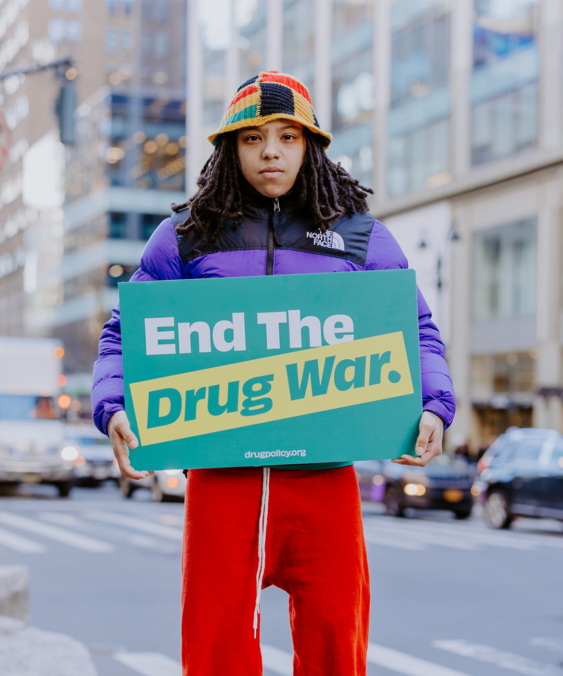
Tony Newman at 510-208-7711 x 1383 or Shayna Samuels at 212-547-6916
Ecstasy has been getting a lot of attention lately. Use of the drug is rising, especially among teens and young adults at all-night dance parties called raves; seizures of the drug have increased dramatically worldwide; and media attention has surged, topped by last week’s New York Times Magazine cover story in which the author gave a personal testimony of his positive experiences with the drug.
Today, more than 300 scientists, physicians, government public health officials and club-goers gathered at the Golden Gate Club in the Presidio of San Francisco to wade through the hype and share the latest, most accurate information on this controversial topic.
The conference — “The State of Ecstasy: The Science, Medicine and Culture of MDMA,” was sponsored by The Lindesmith Center-Drug Policy Foundation (TLC-DPF), a leading drug policy reform organization, in partnership with the San Francisco Medical Society, the San Francisco Department of Public Health, and the University of California at San Francisco, among others. Participants included Alexander Shulgin, Ph.D., the chemist who re-discovered and popularized MDMA for therapeutic uses in the 1970s; Charles Grob, M.D., psychiatrist, researcher and author of “Deconstructing Ecstasy: The Politics of MDMA Research”; and Rick Doblin, Ph.D. of the Multidisciplinary Association for Psychedelic Studies, which sponsors clinical studies to obtain FDA approval for the use of MDMA as a prescription medicine.
“The State of Ecstasy” preceded the U.S. Sentencing Commission’s (USSC) upcoming ruling on MDMA, about which a number of the conference participants were asked to comment. This federal agency has recently proposed equating the drug with heroin for sentencing purposes. Formerly one gram of MDMA (about 40 tablets) had been equated to 35 grams of marijuana. The new rules would equate one gram of MDMA to one kilogram (1,000 grams) of marijuana – a dramatic increase in sentencing.
“Criminalizing Ecstasy is not the answer,” said Emanuel Sferios, President of DanceSafe, a group of peer educators who test pills at raves to make sure users have not been sold dangerous substitutes. “We have not been able to arrest our way out of any other drug problems, so I can’t imagine it will work with this one. Furthermore, these new regulations will only fuel a more viable black market that will actually increase the potential dangers associated with the drug.”
For example, many of the relatively few deaths attributed to Ecstasy were not actually caused by MDMA, but by substitutes, or fake ecstasy, like PMA (paramethoxymethamphetamine). Stiffer penalties are likely to push sales of the drug further underground, greater increasing such risks. Other deaths were caused by heatstroke when Ecstasy was taken in unsafe environments without proper ventilation. Harm reduction measures such as offering free water at raves and enforcing zoning laws were recommended by conference participants.
“Using scare tactics based on hype is not the way to keep kids safe,” said Marsha Rosenbaum, co-chair of the conference and lead researcher on the first NIDA-sponsored sociological study of ecstasy in 1985. “All of the kids using ecstasy today were exposed to DARE and other government drug prevention programs. “Just say no” messages are too simplistic. We need a more honest approach to drug education.”
Other topics discussed at today’s conference included:
Neurotoxicity – Does ecstasy cause brain damage? MDMA (ecstasy’s chemical name) causes nerve cells in the brain to release serotonin, a neurotransmitter associated with feelings of happiness and self-worth. Like Prozac, ecstasy also keeps serotonin from being reabsorbed, further increasing the serotonin concentration in the brain. Research on animals has shown that some doses of MDMA are associated with lower serotonin levels in certain areas of the brain, due perhaps to nerve terminal degeneration. However, it is still an open question whether this occurs in humans at therapeutic doses taken in a carefully controlled environment, or even from larger recreational doses.
Therapeutic Uses – Many psychiatrists and psychotherapists have reported that MDMA-assisted psychotherapy allowed their patients to deal with trauma, interpersonal relationships and terminal illness. A retrospective questionnaire administed to 121 Swiss patients who legally received MDMA-assisted psychotherapy from 1988-1993 found that 85% reported either good or slight improvement.
“I hope the government can see past the unsubstantiated hysteria about MDMA so that comprehensive, scientific experiments can be conducted on its potential therapeutic benefits,” said Rick Doblin, Ph.D. of the Multidisciplinary Association for Psychedelic Studies. “There is a difference between use and abuse.”
